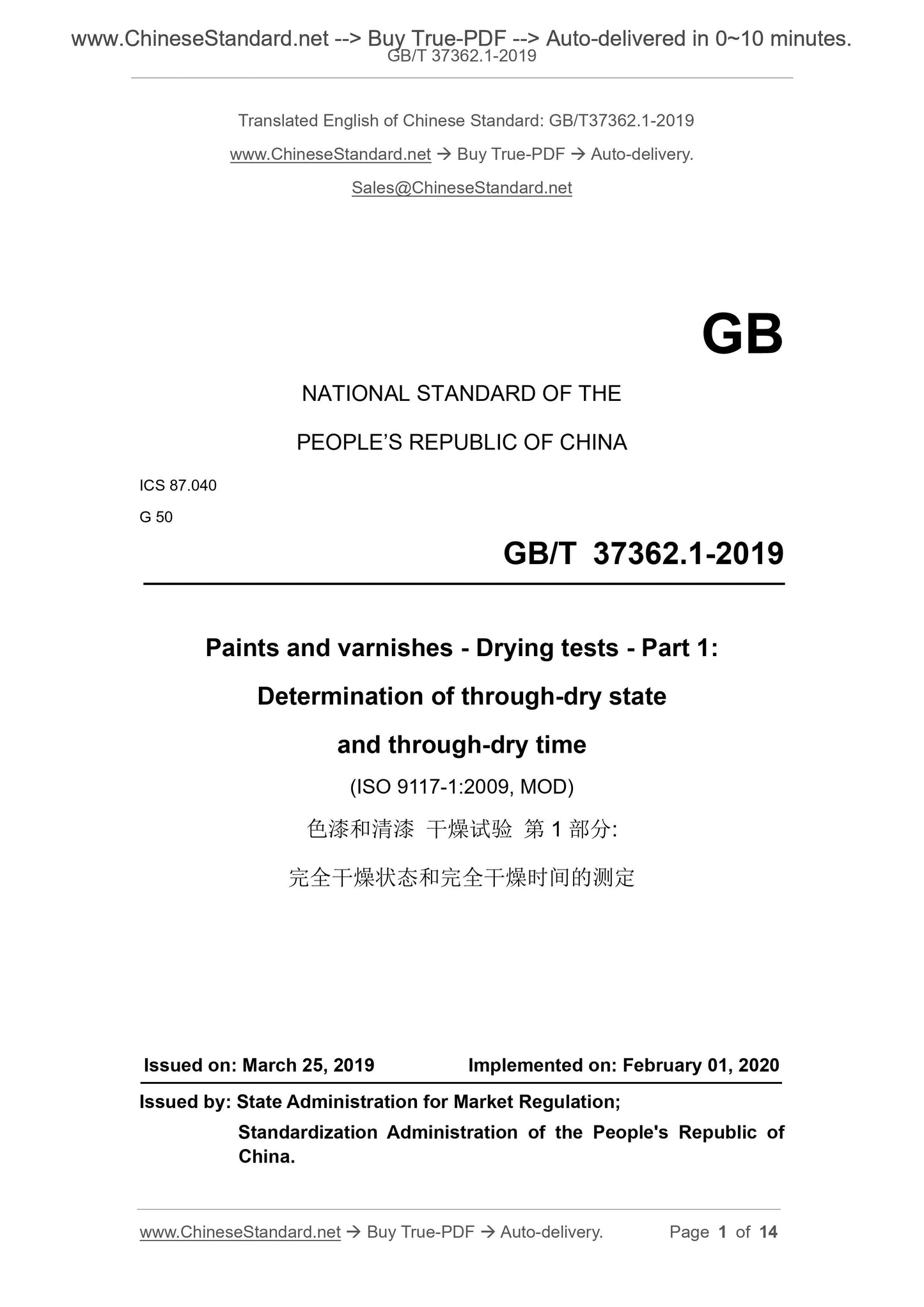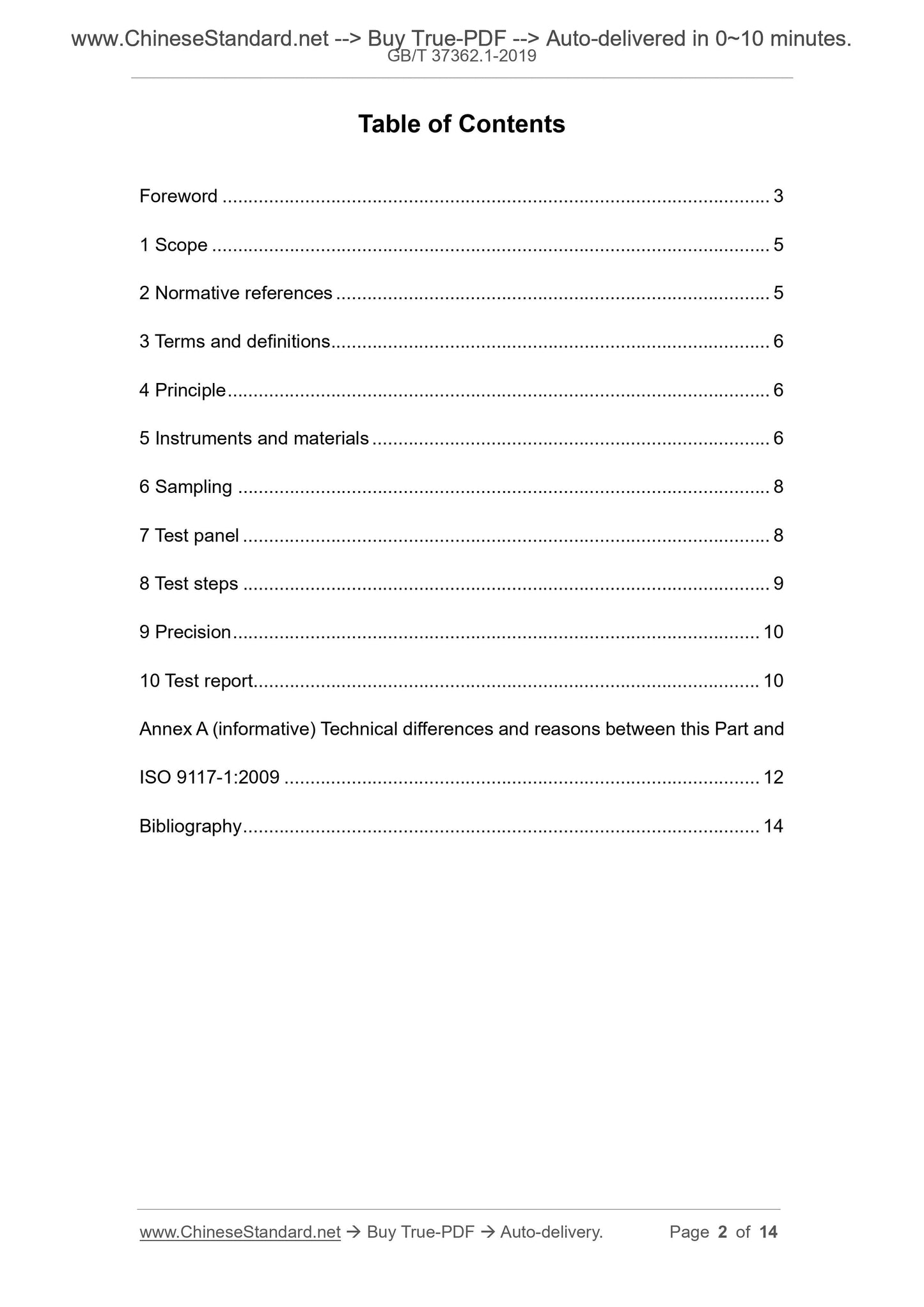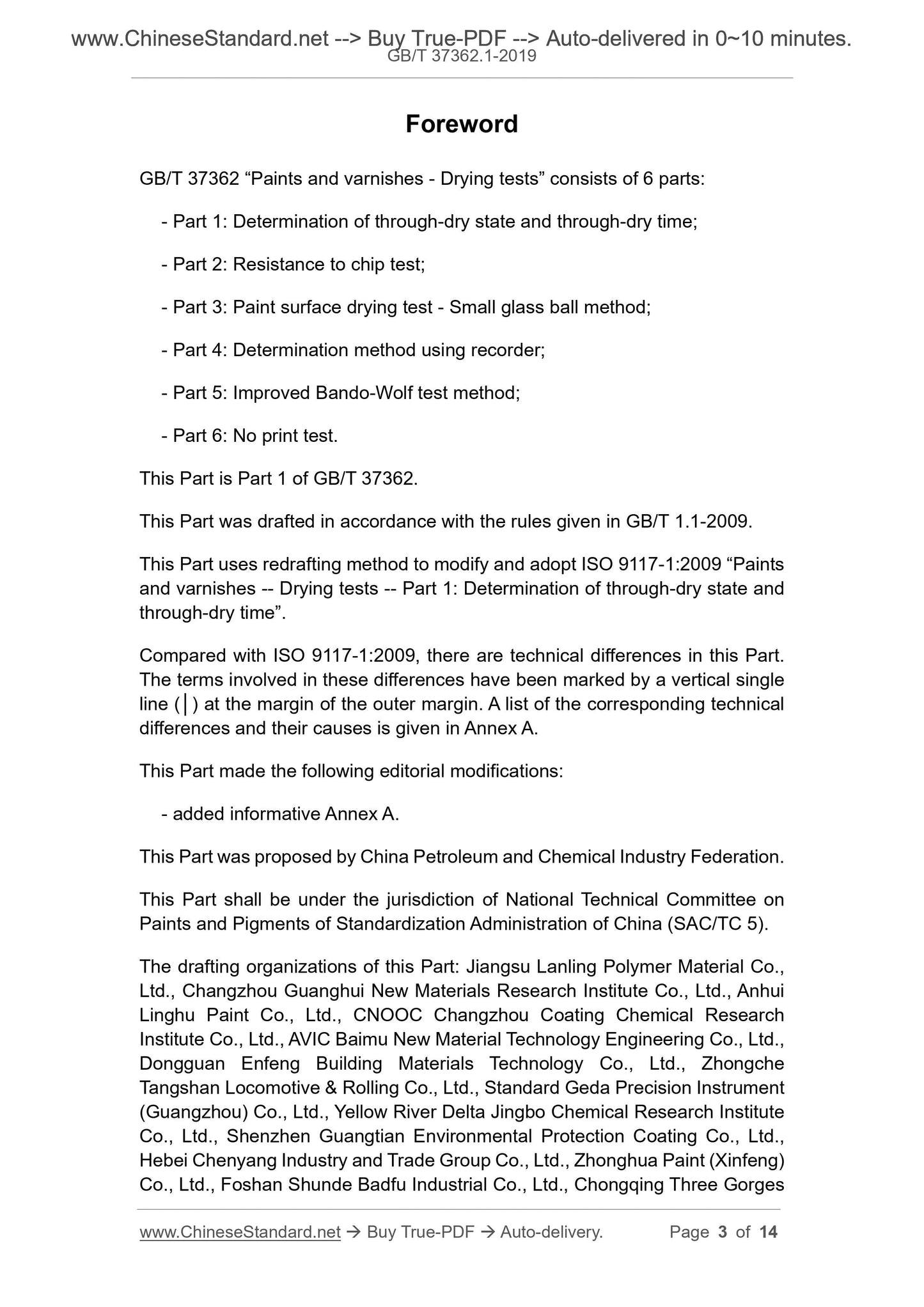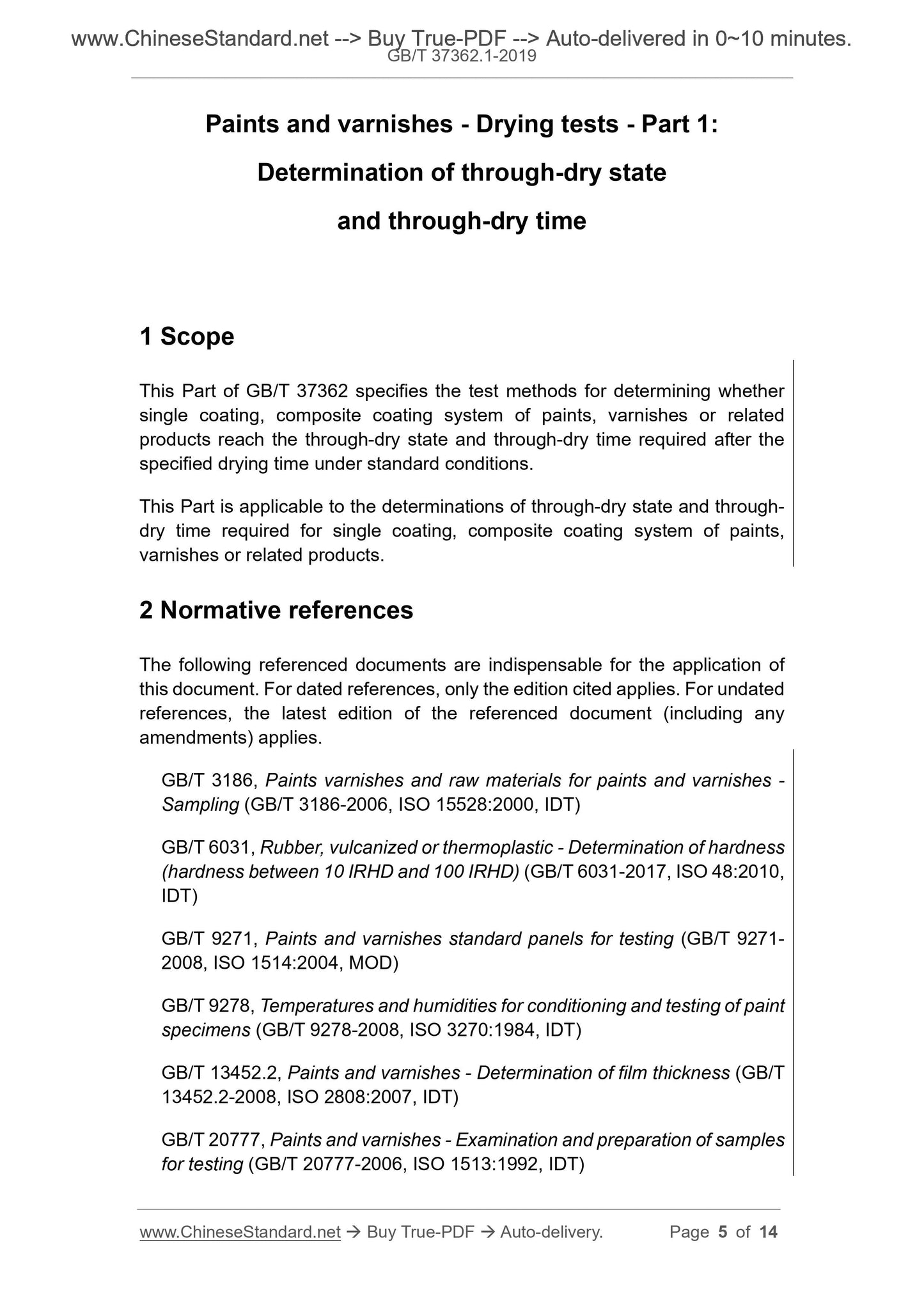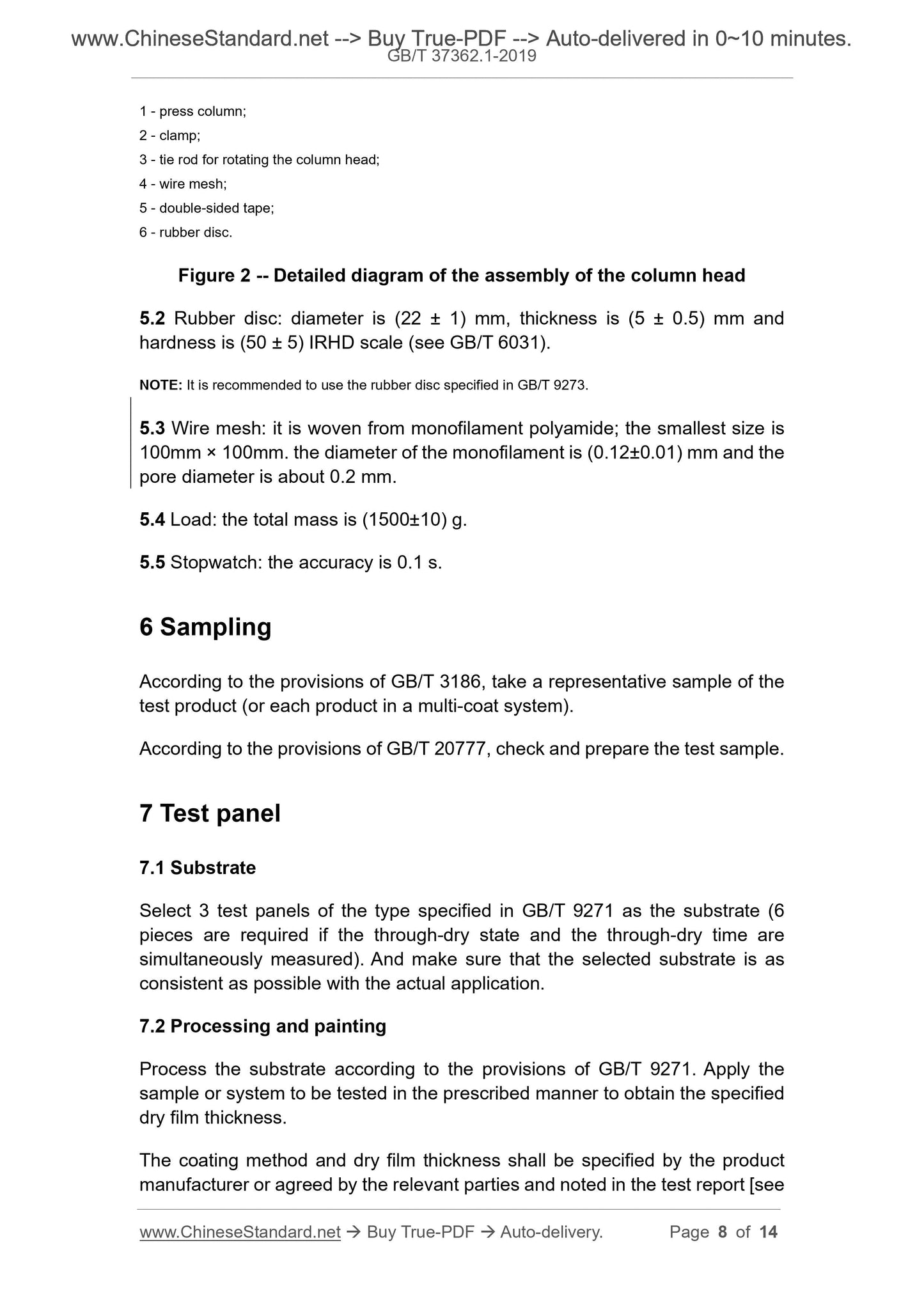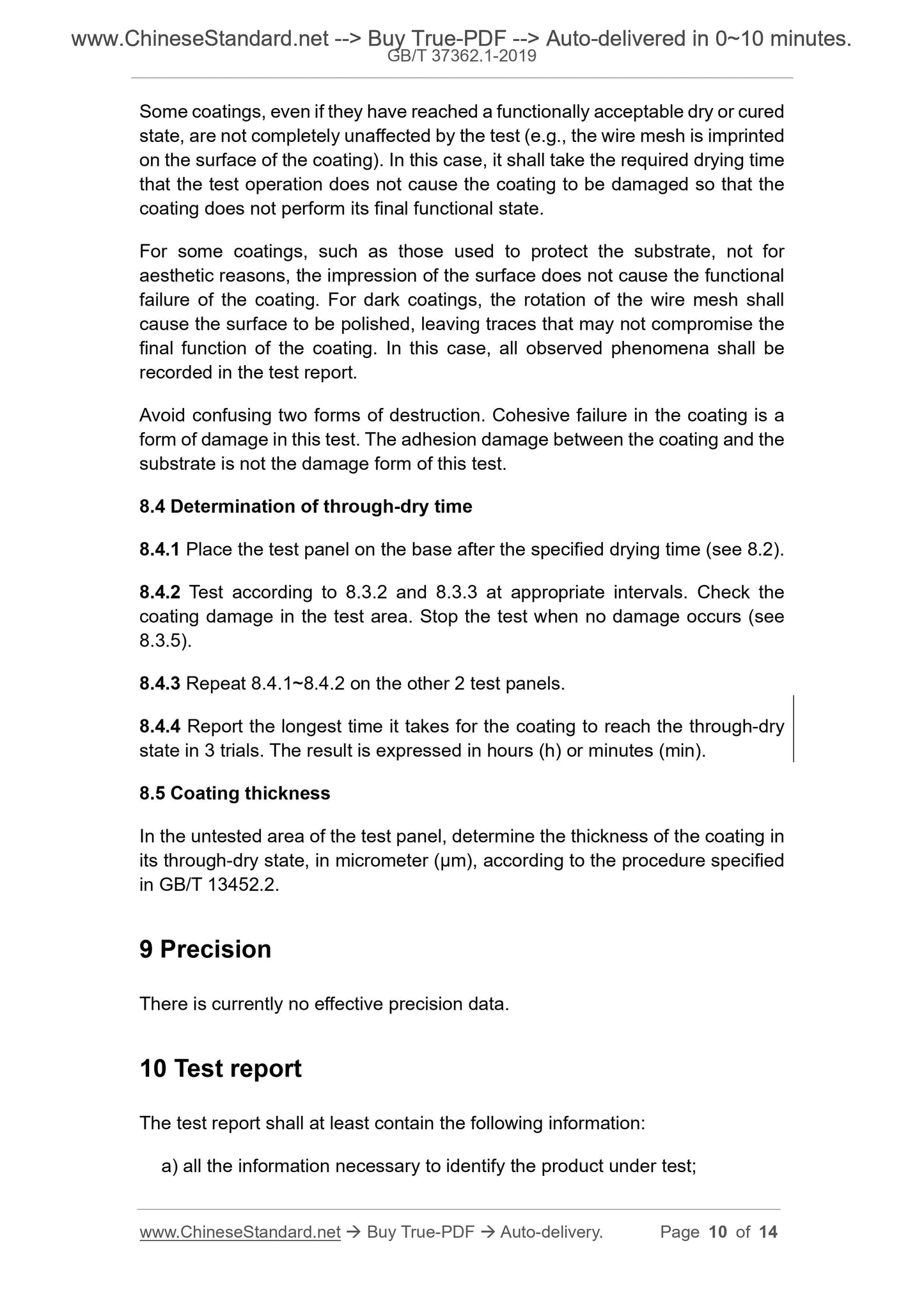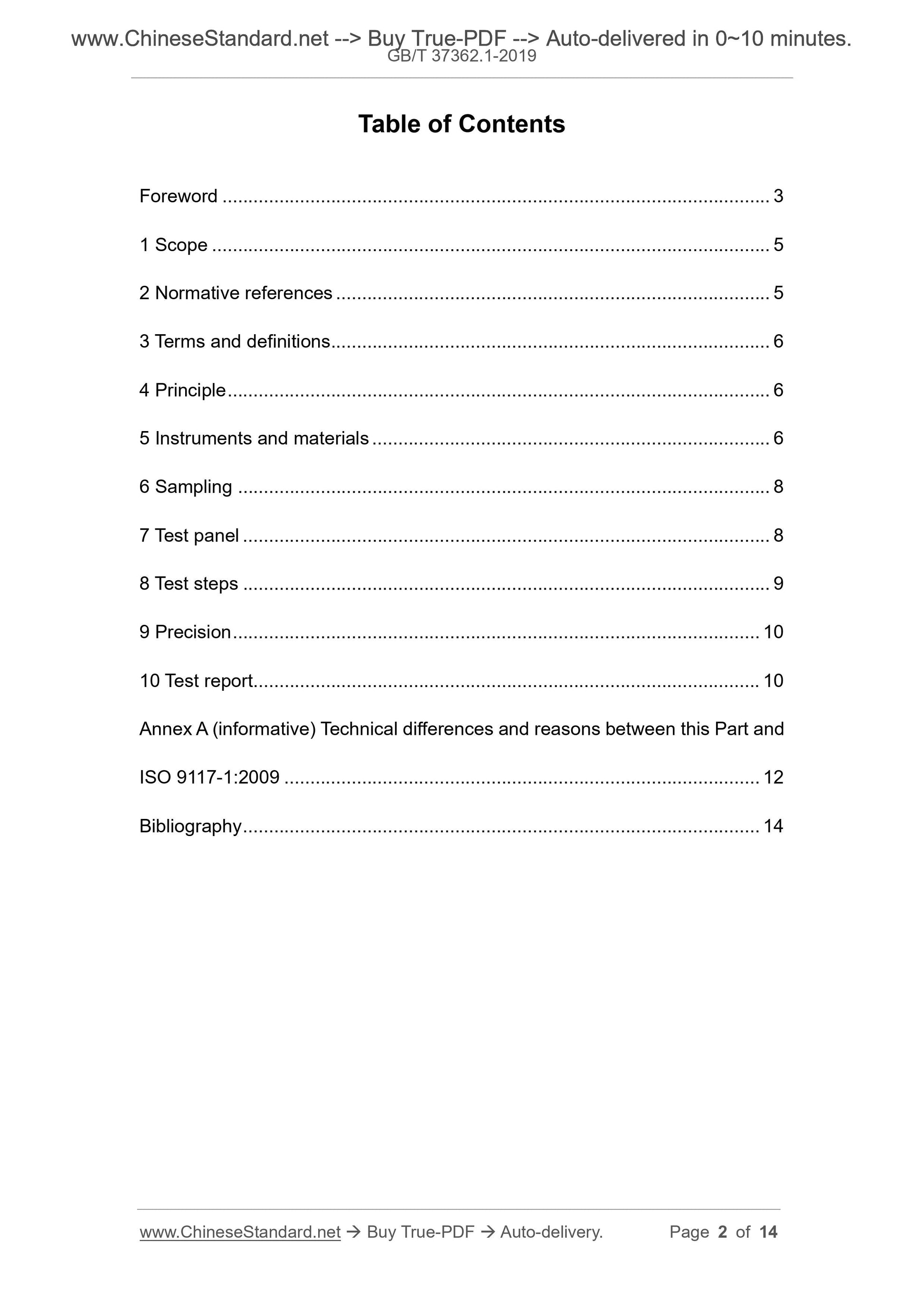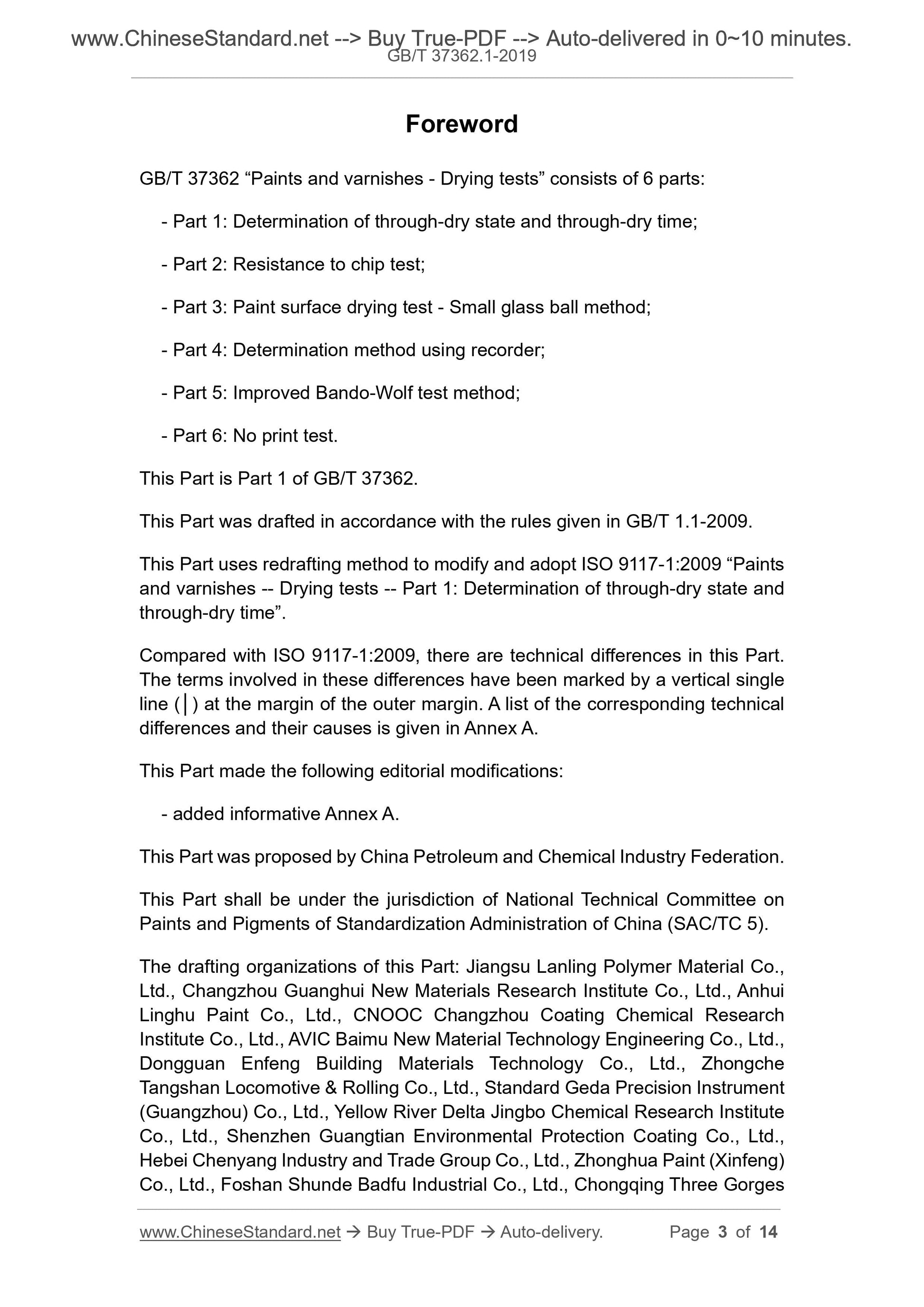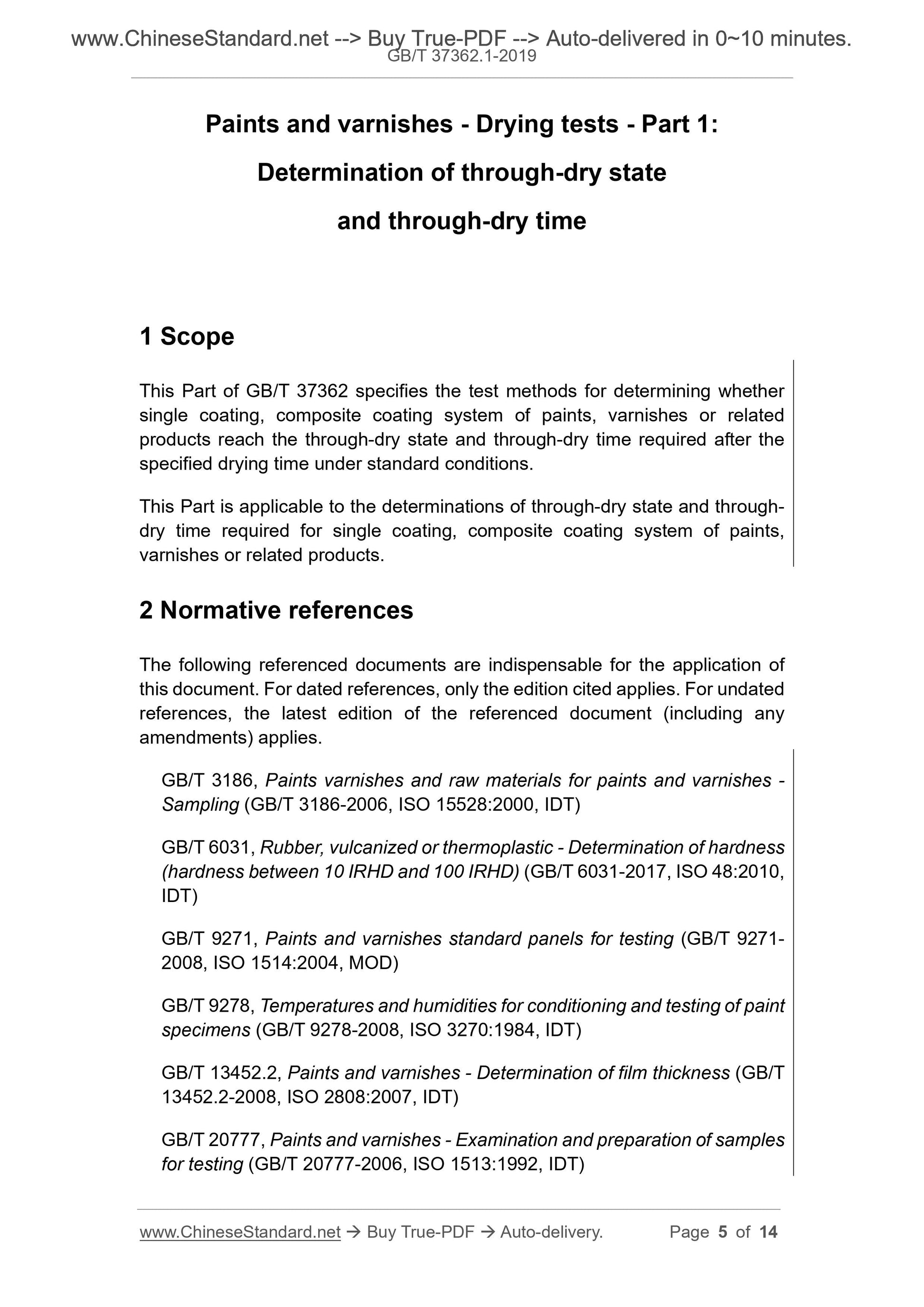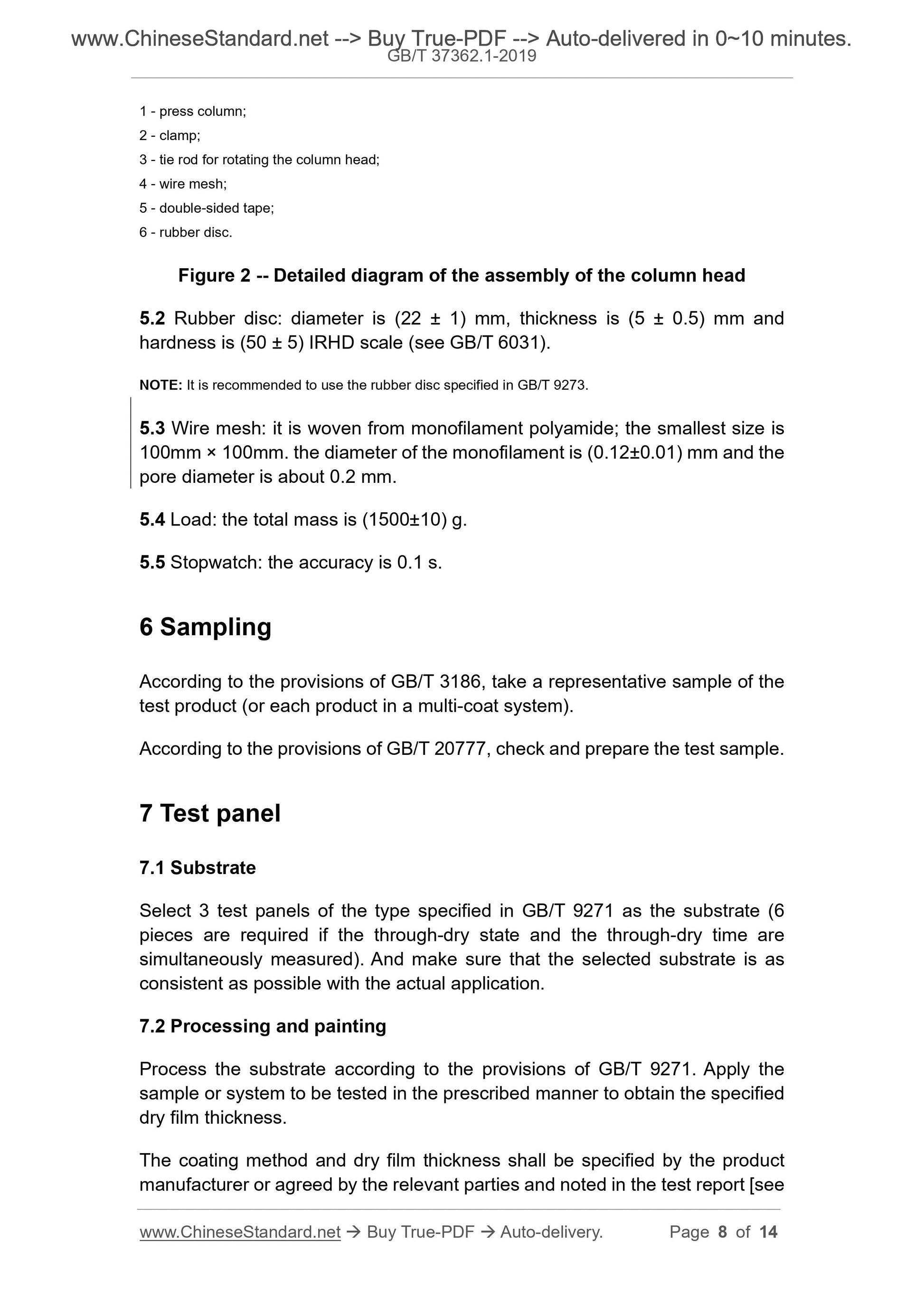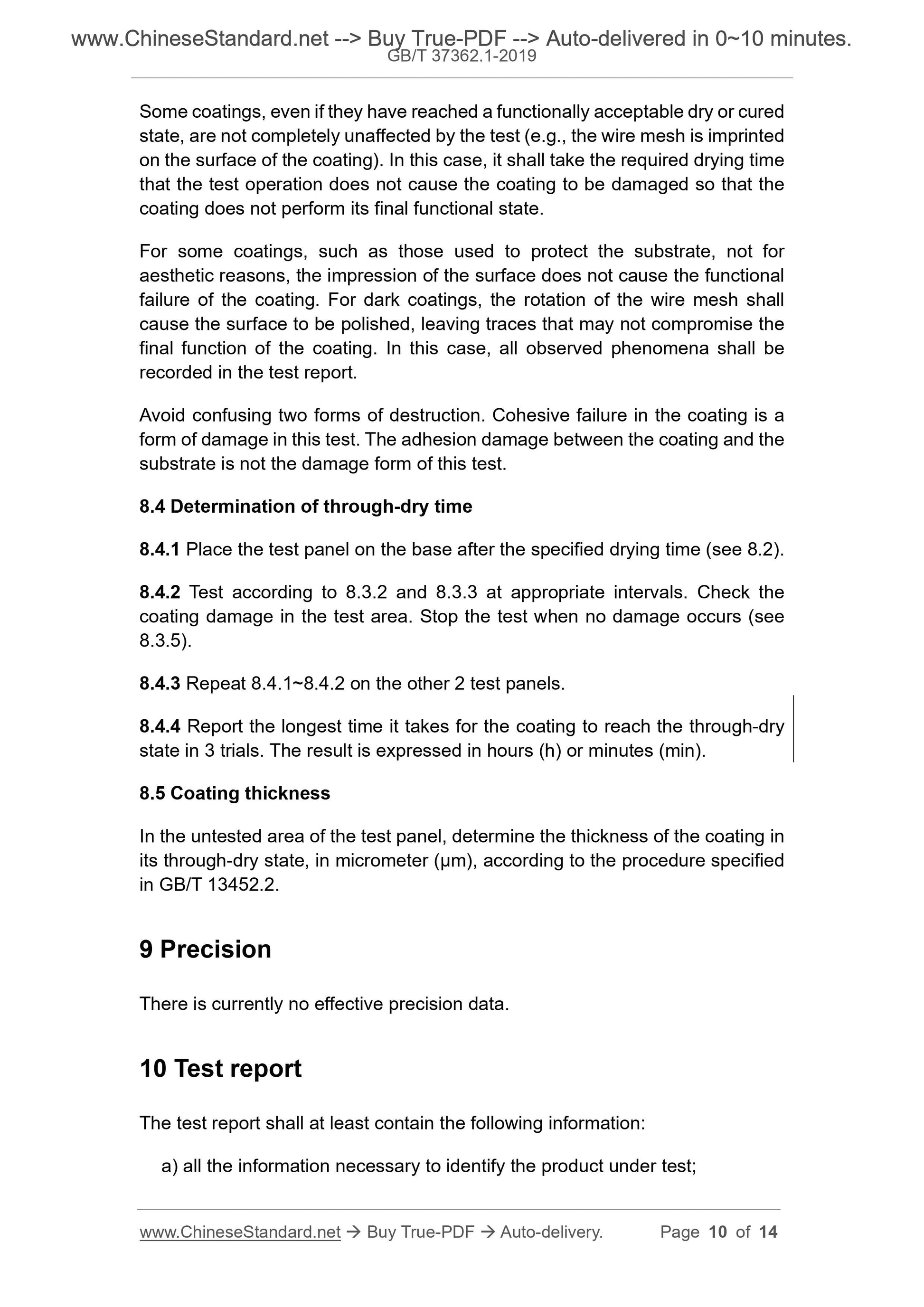1
/
of
6
www.ChineseStandard.us -- Field Test Asia Pte. Ltd.
GB/T 37362.1-2019 English PDF (GB/T37362.1-2019)
GB/T 37362.1-2019 English PDF (GB/T37362.1-2019)
Regular price
$150.00
Regular price
Sale price
$150.00
Unit price
/
per
Shipping calculated at checkout.
Couldn't load pickup availability
GB/T 37362.1-2019: Paints and varnishes -- Drying tests -- Part 1: Determination of through-dry state and through-dry time
Delivery: 9 seconds. Download (and Email) true-PDF + Invoice.Get Quotation: Click GB/T 37362.1-2019 (Self-service in 1-minute)
Newer / historical versions: GB/T 37362.1-2019
Preview True-PDF
Scope
This Part of GB/T 37362 specifies the test methods for determining whethersingle coating, composite coating system of paints, varnishes or related
products reach the through-dry state and through-dry time required after the
specified drying time under standard conditions.
This Part is applicable to the determinations of through-dry state and through-
dry time required for single coating, composite coating system of paints,
varnishes or related products.
Basic Data
| Standard ID | GB/T 37362.1-2019 (GB/T37362.1-2019) |
| Description (Translated English) | Paints and varnishes -- Drying tests -- Part 1: Determination of through-dry state and through-dry time |
| Sector / Industry | National Standard (Recommended) |
| Classification of Chinese Standard | G50 |
| Classification of International Standard | 87.040 |
| Word Count Estimation | 10,125 |
| Date of Issue | 2019-03-25 |
| Date of Implementation | 2020-02-01 |
| Issuing agency(ies) | State Administration for Market Regulation, China National Standardization Administration |
Share
